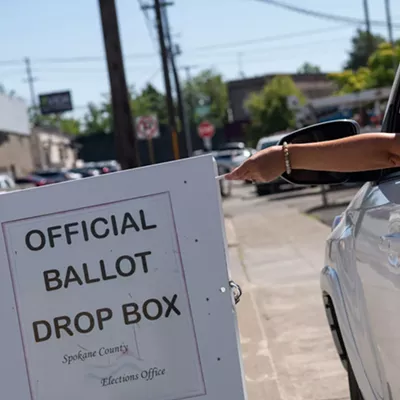Shortly after her nomination, Interior Secretary Gale Norton complained that Washington-based policy-makers often have no real understanding of the West. Between Norton and Vice President Dick Cheney, the American West might have expected some innovative suggestions about allowing Westerners to exercise more responsible control over the region's public lands. But in fact, these two Westerners are taking the lead in devising and imposing a whole new layer of national policy on the West. This time it's national energy policy.
A recent draft report prepared by the Department of the Interior for Cheney's review aims to "enhance federal energy development on Department of Interior and Forest Service administered lands." Norton has already announced that she will seek to open up to energy production several of the last-minute national monuments created by Bill Clinton, and in general the George W. Bush administration seems intent on opening up as much of the public domain to the oil and gas industry as possible.
Despite the decentralist rhetoric, then, Norton and Cheney are looking like big-government, top-down, command-and-control folks after all. They have made no noticeable commitment to empowering local collaborative groups to determine the best policy for particular national forests or BLM districts. They already know what the best policy is for every acre of the public domain that can supply up to a minute of the nation's energy needs.
The Bush administration's frontal assault on Clinton's public land initiatives in the name of national energy policy is just another example of Washington-driven national policy being imposed on the West. In this case, the policy serves perfectly the interests of the resource industries that so handsomely backed Bush's candidacy.
Most environmentalists, of course, never expected anything else of this administration, and they are entitled to a rousing "I told you so." But isn't this a case of sauce for the goose being sauce for the gander?
For eight years, environmentalists had the ear of the Clinton administration, and they persuaded that administration to take some bold actions to protect the public domain. The concerns of Westerners were frequently given short shrift as Washington-based leaders decided how to manage large swaths of Western landscape. Now the tables have turned, and different interests are dictating national public land policy.
If the public lands are to be governed strictly and totally on the basis of national priorities and policies, then national energy policies are as appropriately applied across the entire public domain, as are national conservation policies. If one administration is mainly influenced by environmental interests and another by corporate interests, then those interests are likely to define the "national interest" in the public lands, and public land policy is likely to swing wildly from one end of the ideological spectrum to the other.
Nothing is going to stop this pendulum from swinging through at least a few more cycles. Nothing will stop the Bush administration from rewarding its resource industry contributors with enlarged access to the public domain, and nothing will stop national environmental groups from using that exploitation to raise funds to finance the next swing of the national pendulum. The entire system is too big and too entrenched to change in anything resembling a hurry.
But there might still be a chance to experiment with something new at the margins of the monster. There actually are a fair number of Western Republicans for whom Western self-determination is more than a stalking horse for corporate enrichment. Meanwhile among environmentalists, there are those who know that in policy, as in biology, one-size-fits-all monocultures are deadly, while diversity is the essence of vitality. There is an opportunity right now to build some creative diversity into the chinks of the existing public lands system.
While the centralizers on both sides of the aisle continue to apply a series of national policies to most of the public domain, let's pick some national forests and BLM districts where neither national roadless policies nor national energy policies dictate management regimes, but where ideologically diverse groups of Westerners are given a decade or so to manage the public land under a congressionally imposed mandate to manage for ecological sustainability. The Federal Lands Task Force Working Group in Idaho has recommended five pilot projects very much along these lines, and similar proposals keep popping up elsewhere around the region.
Maybe it's time to give Westerners a chance to show how responsibly they could manage their own landscapes if given a little relief from the paternalism of both national political parties. And those who argue that only national policy can protect Western landscapes should watch what national policy might be about to do to the West.
Daniel Kemmis, the former mayor of Missoula, is a contributor to Writers on the Range, a service of High Country News (www.hcn.org). Now he is the director of the Center for the Rocky Mountain West and the author of This Sovereign Land: A New Vision for Governing the West (Island Press, 2001).
















